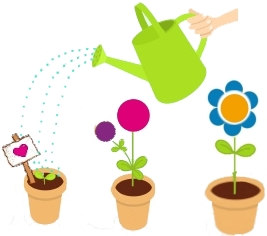You will be told…
That Cerebral Palsy is not progressive

Indeed, the definition of CP includes brain damage which will not increase during the life time of the child. The extent of the damage will not increase and the damaged zones will remain the same.
However, what will increase are the repercussions of the child’s growth on a spastic body… The bones grow while spasticity contracts the muscles (and sometimes even leads to the retraction or shortening of the muscles). So it is very easy to understand this will lead to deformations (feet in equinus, knees in an X position and sometimes up to hip dislocations)..
The progress made during childhood can be taken back during adolescence. So indeed, the consequences of the pathology are ever evolving.
This is not pleasant to read, but it is important to know in order to increase the amount of massages, stretches and physical exercise during the growth bursts.
You should not do intensive physiotherapy

Neuro-pediatricians will tell you not to practice intensive rehabilitation because:
- you’re going to put excessive pressure on your child if you become his therapist,
- your child will feel a strong aversion towards physiotherapy sessions when he or she reaches adolescence,
- you will get exhausted.
Yes, but what if nothing is done? We let our child grow up without any hope of future autonomy?
Because be under no illusion: our children do not evolve like other children do. The logic is different. It is up to us to stimulate our children in order for them to acquire new skills.
Here are two tips that seem fundamental to us, so that your child is comfortable and happy in his/her own skin:
1/ Rehabilitation must be pleasant, in all circumstances
For the child to go through daily rehabilitation, he/she must enjoy it. This is fundamental for the development of self-confidence. Indeed, at the age of 4, our daughter wants to do her exercises at home and she loves to go and see her physiotherapists. Here is what we have implemented:
we stopped seeing professionals who were making our child cry. Even if it was for his/her own good. Look for practitioners who manage to establish a climate of trust with your child and respect his/her sensibility.
In order to do a 45 minute long MEDEK session per day, we have a trick: we put a cartoon during the session whereas the rest of the time, the TV is never turned on. This way, it becomes very appealing to go do some exercise!
And of course, we must listen to our child and know when a break is needed on days when he/she is too tired.
2/ Do not talk about the difficulties of your child and the obstacles you face to a third person in front of your child..
It is not an easy thing to do, but if you want to prevent your child from feeling guilty or that he/she feels too much pressure, you must avoid this type of conversation as much as possible. Postpone that discussion until a time when your child is not around to hear you. As most people know, children are like sponges and they pick up on negative emotions out of your conversation. And even if he/she does not speak, he/she understands that you talk about him/her not capable of crawling on all fours and that you are discouraged. This is not the best way to encourage him/her…
If asked, be brave enough to respond: « I’ll tell you at another time”.